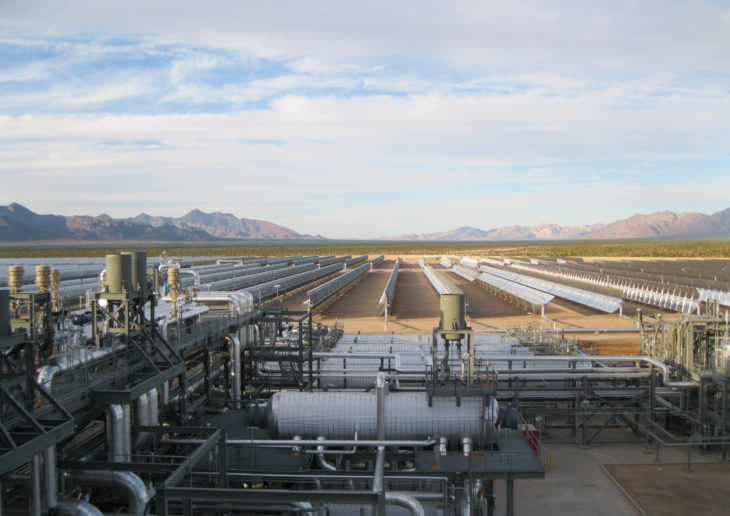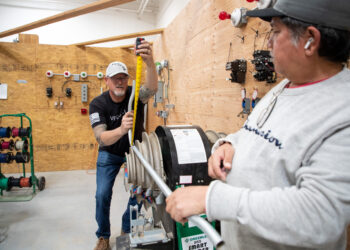
Culinary careers are sizzling again as the hospitality and restaurant industry bounces back from the pandemic and seeks to fill the positions vacated during the COVID-19 downturn. Chaffey College is doing its part to get more cooks in the kitchen.

The future is now.
That’s the message from industry experts when it comes to the fields of advanced transportation and renewable energy in the Inland Empire
In fact, the region is becoming a national center of renewable energy development, which is playing a pivotal role in driving the local economy. One of the three major wind resource farms in California is situated in the area, and some of the largest solar energy farms in the world are located in the expansive, sun-drenched Riverside and San Bernardino County deserts.
On the advanced transportation front, three major Southern California transit systems located in the Inland Empire are using natural gas, electric, and hybrid vehicles, and a growing number of government, corporate, and rental fleets now rely on electric vehicles.
“The advanced transportation and renewable energy sectors are changing rapidly,” said Larry McLaughlin, a Deputy Sector Navigator based at College of the Desert who has responsibilities for aligning community college workforce training programs with industry needs in the Inland Empire and Desert region. “We’re on the forefront of that change.”
And community colleges in the region are setting the pace in meeting changing workforce needs. College of the Desert and Victor Valley College, for example, are collaborating with the growing solar energy industry in developing employee training programs. Both work in partnership with their county Workforce Development Boards to train and place people in solar industry jobs.
According to the National Solar Jobs Census, solar energy-related employment across the country increased by more than 51,000 workers in 2016, a 25-percent jump from the previous year. With the Inland Empire and Desert region a world leader in renewable energy, California leads the country with more than 100,000 solar energy-related jobs. And a recent study by the Center of Excellence, which provides customized data in supporting community college workforce programs, found that nearly two-thirds of companies surveyed in the region anticipate employment growth within the next two years. Meanwhile, nearly 60 percent of employers say accessing a sufficient pool of qualified candidates outside their company is a challenge.
Among the major alternative energy centers in the two-county region:
In addition, plans are under way for the 500-megawatt Palen solar project between Interstate 10 and Joshua Tree National Park.
The jobs aren’t confined to massive solar energy farms. According to the Centers of Excellence, which study the regional economies of California to support community colleges in crafting effective workforce training programs, demand for solar panel installers remains strong, with workers in the region earning up to $31.51 per hour. Weatherization installers and technicians are earning up to $29.82 per hour.
The Center for Law, Energy & the Environment at UC Berkeley concluded that state climate policies led to $9.1 billion in direct benefits and more than 41,000 direct jobs from 2010 through 2016 for the Inland Empire. When accounting for the spillover effects of those benefits, the figures jump to $14.2 billion in total economic activity and more than 73,000 jobs created. New wind and solar power generation facilities boosted employment by more than 900 jobs, with a ripple effect associated with those jobs, income, and spending increasing employment by approximately 9,000 positions.
With several public transit systems in the region, serving commuters traveling great distances to get to work, and with the warehouse and distribution industry flourishing, the advanced transportation industry in Riverside and San Bernardino counties is also seeing an uptick in demand.
“Autonomous vehicle systems are coming onto the market fast,” McLaughlin said. “A lot of vehicles today already have autonomous braking systems and driver-assisted steering. That’s happening now. And ultimately, this will develop into fully autonomous vehicles. This is not a fantasy anymore.”
Just visit your local auto dealership, if you need proof of the industry’s evolution. All major manufacturers are adding electric vehicles to their product line. Volvo, for example, has announced that it will phase out vehicles with combustion engines over the next few years and is looking to have sold 1 million electric cars by 2025. Toyota also announced that by 2050, gas-electric hybrids, plug-in hybrids, fuel-cell cars and electric vehicles will account for most of its global vehicle sales.

Culinary careers are sizzling again as the hospitality and restaurant industry bounces back from the pandemic and seeks to fill the positions vacated during the COVID-19 downturn. Chaffey College is doing its part to get more cooks in the kitchen.

Dual Enrollment (DE) is catching on as students and their families recognize the advantages of earning college credit while still working towards high school graduation. But students aren’t the only… Read More – Good News for Community Colleges: Dual Enrollments Are on the Rise

Enrollment in courses not offering credit toward a degree or certificate are outpacing for-credit programs in some states (Fed Communities). And it’s no wonder. With the convenience, minimal time commitment,… Read More – No Credit, No Problem: Noncredit Courses Gain Steam